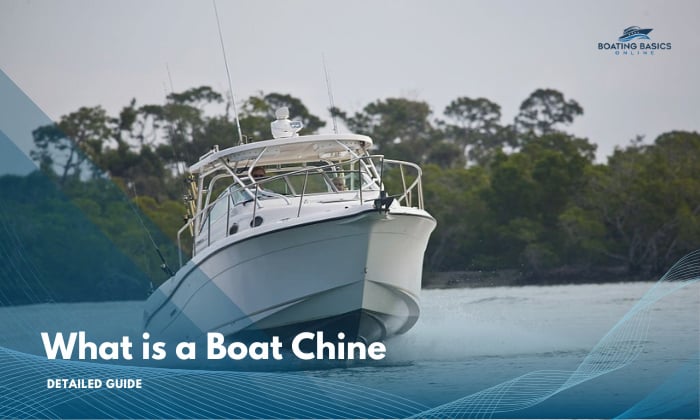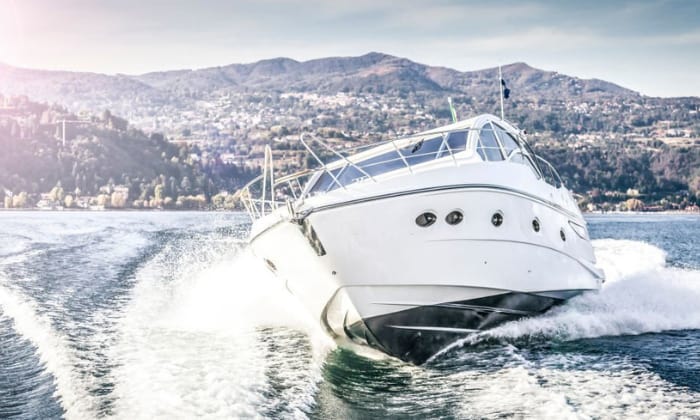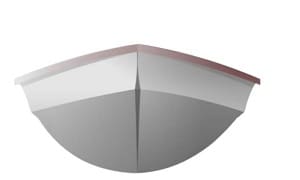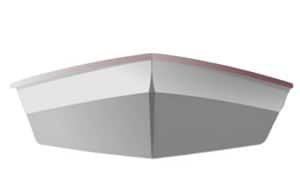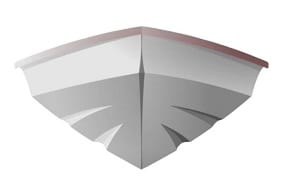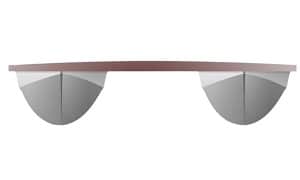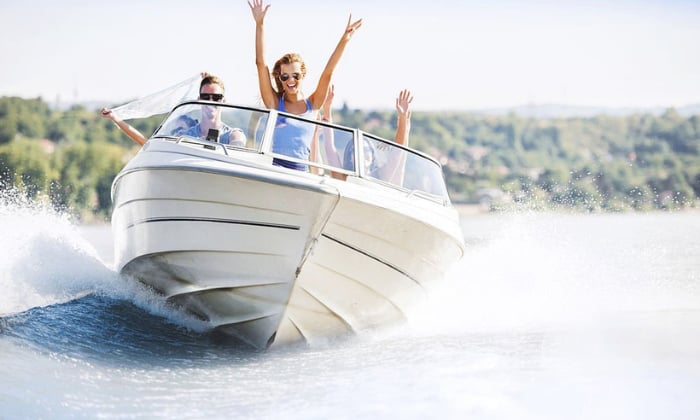A true testament to the greatness of marine engineering is the fact that we can have hours of discussion about a specific boat part. For one, you’re probably here because you’ve been wondering, “What is a boat chine?”
The chine of a boat is a transition point where the side of the boat hull meets its bottom part.
It’s characterized by a sharp change of direction (ridge) in the bottom part of a boat. It plays a supporting role in enhancing the watercraft’s performance and stability.
Table of Contents
Definition and History of a Boat Chine
The official chine definition accepted by most marine experts is that they are the intersections where the hull’s side meets its bottom. This connection forms a sharp ridge that usually is located along the length of the hull, which is prominent in certain boat designs.
The history of chines is as old as the craft of boatbuilding itself.
- In the past, marine shipbuilders didn’t pay much attention to it and just found that incorporating a chine allowed them to simplify their construction process, considering how boats back then were mostly constructed of sheet materials.
- But once they started seeing its value in enhancing the vessel’s performance and stability, that’s when the experimentation and innovations started – and why we now have different chine hull types available.
It can come in various shapes and sizes and doesn’t always have a pointed, sharp look.
As such, its location can be anywhere on the hull where the said points meet, but given most designs, it can be considered a part of the boat’s underside.
Role of Chines in Stability and Performance
- Chines pave the way to better stability. Although, in most circles, this is generally considered as only secondary stability, meaning the boat is less likely to roll over while traveling.
- We also can’t ignore how the chine lends to directional stability, especially during instances when you want your vessel to maintain its course.
- As for how chines benefit performance, we have to consider how flat-bottomed boats (associated with chine hulls) facilitate a planing hull. As we all know, such hulls are more amenable to better speed and efficiency.
Incidentally, if you’re interested in boat design, you’ll soon find that chine and lifting strakes design is an art in itself. It’s a favorite topic among boat design enthusiasts, particularly how it can be used to optimize stability and reduce spray, among other perks.
For instance, did you know that chine width should only be 2% (at most) of the total chine beam on each side?
Types of Boat Chines
Chines can be categorized based on their orientation and number on the hull. Counting them all, we arrive at five total types of boat chines. There’s an ongoing debate between hard chine vs soft chine, performance-wise, and I’ll let you be the judge based on the pros and cons of each one I shared here.
1. Soft Chine
A soft chine has a more rounded and curved transition. This produces a gentler shape that makes it earn its name. It’s often the go-to chine for plenty of builders since it’s easy to build and maintain.
- Favored by most shipbuilders
- Cost-friendly
- The rounded bottom imparts more stability because it allows the boat to roll and return to position smoothly
- Provides a smoother ride experience
- The slightly higher angle makes it less efficient for planing, especially if you haven’t gained enough speed yet
- Doesn’t offer enough protection from water sprays
2. Hard Chine
With a hard chine, there is no presence of curves at all. Rather, it’s characterized by a transition that’s more angular. This creates a distinct break in the hull’s shape, which is often visible to the naked eye.
- Can plane better
- Pushes water out and, thus, keeps everyone onboard dry
- Easier and faster to build
- Lacks the stability found in soft chines
- Generally requires more experience to handle
- Some designs lead to quicker wear and tear
3. Reverse Chine
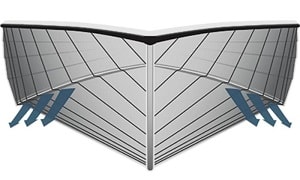
A reverse chine is characterized by sharp transitions that angle downward or upturned. It’s one of the newer designs and types of boat chine, built with practicality in mind.
- Such boats often keep water from splashing onto the deck while keeping propulsion smooth.
- It also makes the boat more than capable of handling choppier waters.
- Lastly, it aids the boat in maintaining its stability and buoyancy when making sharp turns.
- Not ideal for lengthy travel distances as it tends to consume a lot of fuel at top speed
- Not beginner-friendly
4. V Chine
This type of chine is called such because it produces a “V” shape on the boat’s underside. It’s not as popular as most chines due to its highly impractical design.
- Not complicated to construct
- Tends to have poor stability
Related: V hull vs Flat Bottom
5. Multi-Chine Hull
Multi-chine hulls can either be two-chine or three-chine hulls. Usually, more chines means more stability, strength, and buoyancy.
- Has a good balance of strength and ease of construction
- Allows more volume at the waterline while keeping the topsides vertical. This means more interior space and storage
- More aesthetically pleasing than most chine designs
- Pales in comparison to rounded hulls in terms of overall strength
Chine Walk and Its Causes
Chine walking is when the boat rocks from side to side because it loses its ability to balance on its keel.
It usually happens because a V-hull boat accelerates to the point that it starts to lift out. As it does so, the wetted surface on the V-shaped portion of the hull decreases, causing the loss of balance.
It can be tied to a number of causes, namely:
- The boat’s speed – chine walking occurs more often at higher speeds.
- The hull’s shape – V-hull boats are more prone to do it because of the sharp angle of the chine. Irregularities in design can disrupt the balance, too.
- Water conditions – choppier conditions result in chine walking.
- High-lift running pads – these are found in V-shaped boats to increase their lift. However, they reduce the wetted surface area and lead to the same balance issues.
- Operator inexperience – it can be avoided if you know how to manage your throttle, trim, and steering.
For a detailed explanation of chine walking, I suggest you watch this video:
Conclusion
And, that’s all the juice regarding the question, what is a boat chine? There’s no denying that these seemingly subtle design features on a boat’s hull can have a big impact on how it performs. Not to mention that they’re stylish in their own right.
Their benefits to boat stability make them indispensable for certain boat designs. They may have their downsides, but constant innovation proves they can be overcome – and offer even more advantages to vessel performance.

“My intention from the first day establishing Boating Basics Online is to provide as much help as possible for boaters who want to experience a first safe and convenient trip. So feel free to join us and share your beautiful journeys to the sea!”

